Photo by Leslie Eguchi
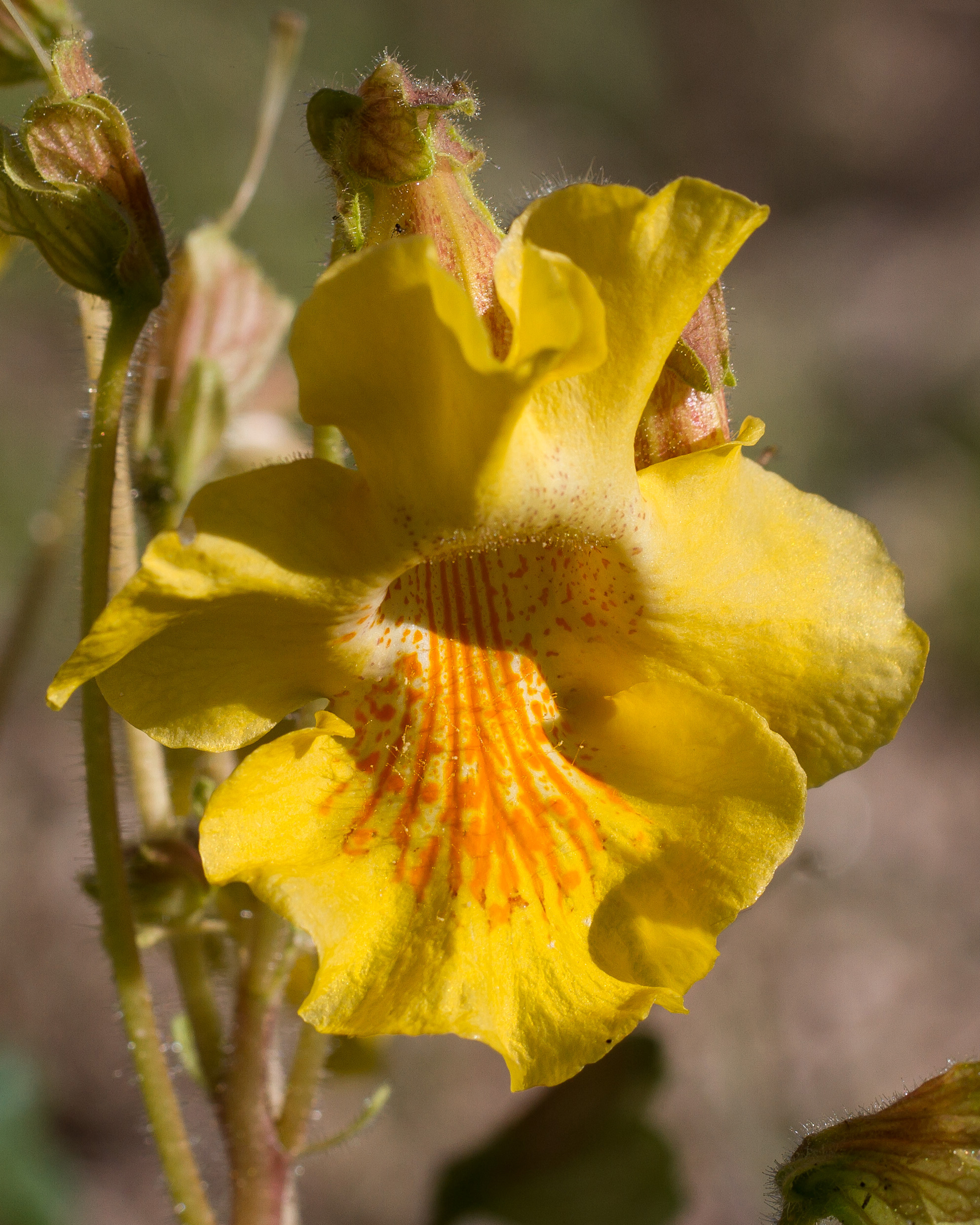 Photo by Leslie Eguchi
Photo by Leslie Eguchi
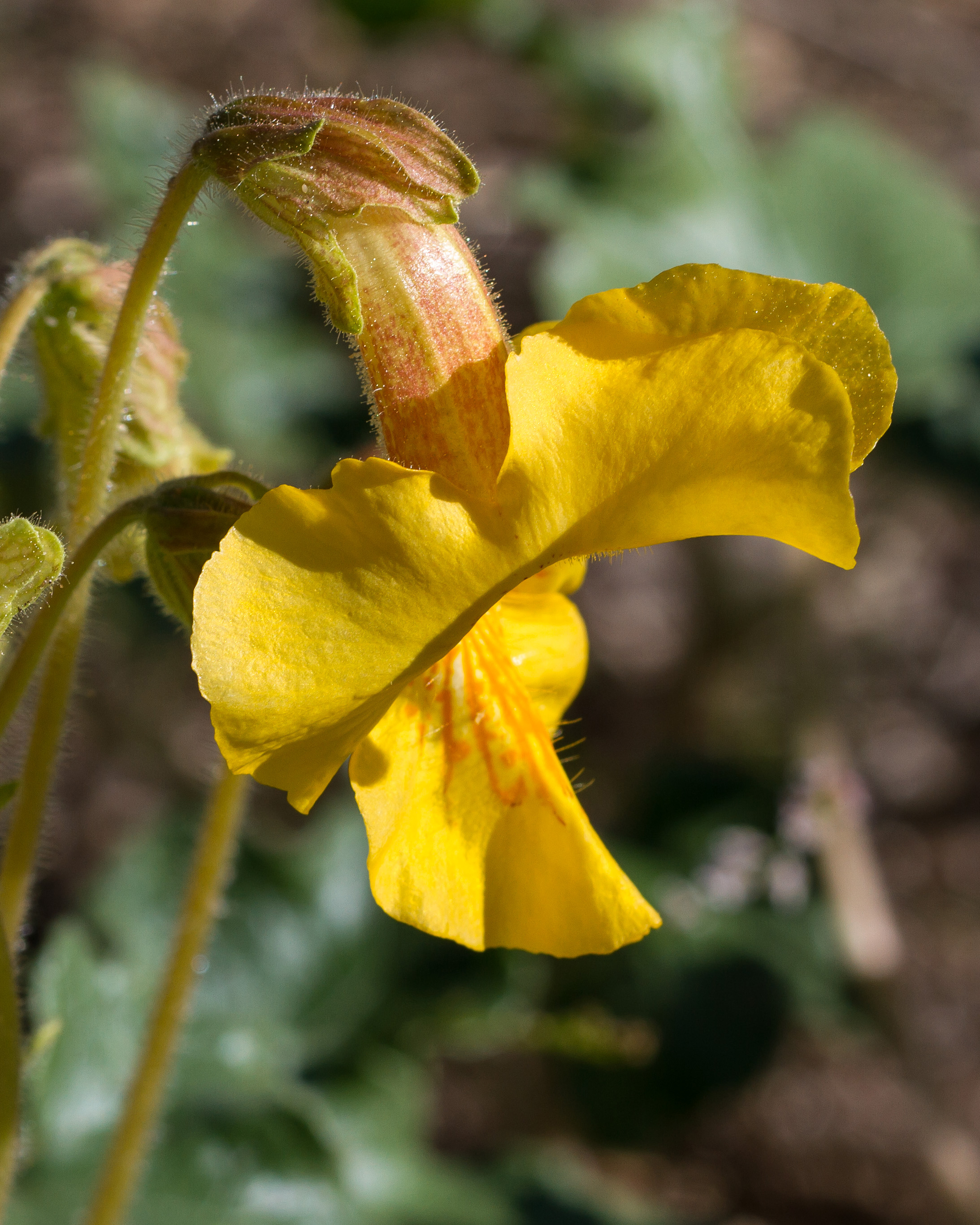 Photo by Leslie Eguchi
Photo by Leslie Eguchi
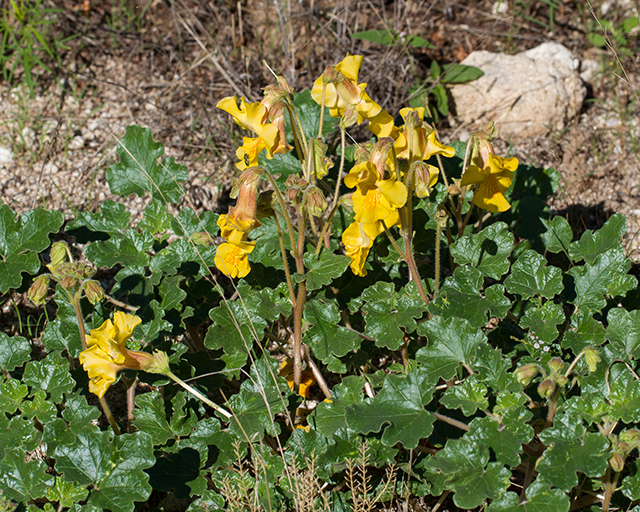 Photo by Leslie Eguchi
Photo by Leslie Eguchi
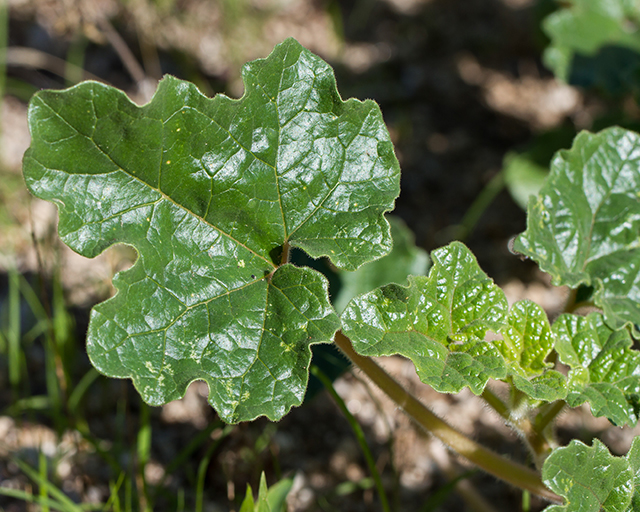 Photo by Leslie Eguchi
Photo by Leslie Eguchi
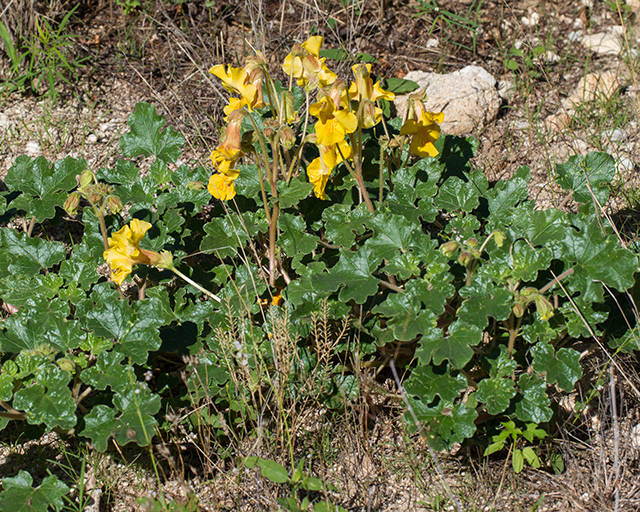
Wildflowers of Southern Arizona
Desert Unicorn Plant.
Proboscidea althaeifolia.
Unicorn-plant (Martyniaceae) family.
Duration: Perennial. Nativity: Native. Lifeform: Forb/Herb. General: Perennial from deeply set tuberous root, shoots emerging with summer rains, stems and petioles semi-succulent and viscid-sticky. Leaves: Often with petioles 4-11 cm long, blades 2-6 cm, broadly ovate to orbicular or kidney-shaped and shallowly lobed. Flowers: 4 cm, showy, corollas bright yellow inside tube and on lobes with brown-purple speckles and dark yellow-orange nectar guides, tube often bronze colored outside. Fruits: Capsule body 4-6.6 cm, claws 9-14 cm. Seeds 6-9 mm, obovoid, blackish and warty. Ecology: Found on sandy-gravelly soils of arroyos, washes, below 4,500 ft (1372 m); flowers May-August. Distribution: s CA, AZ, NM, s TX; south to n MEX. Notes: Notably, black seeds are only found in the native, undomesticated species. This species is distinctive with its yellow flowers. Ethnobotany: Widely eaten, both seeds and fruit. When young, fruit is similar to okra. Seri peeled the fleshy root and ate the cortex. Used for basketry. Etymology: Proboscidea is from Greek proboskis, elephant-s trunk, and althaeifolia means with leaves like the genus Althaea.
Santa Catalina Mountains
Catalina State Park.
Location: Nature trail.
7/28/17
See SEINet Pictures and Description
See FireFly Forest Pictures and Description


 Photo by Leslie Eguchi
Photo by Leslie Eguchi
 Photo by Leslie Eguchi
Photo by Leslie Eguchi
 Photo by Leslie Eguchi
Photo by Leslie Eguchi
 Photo by Leslie Eguchi
Photo by Leslie Eguchi
